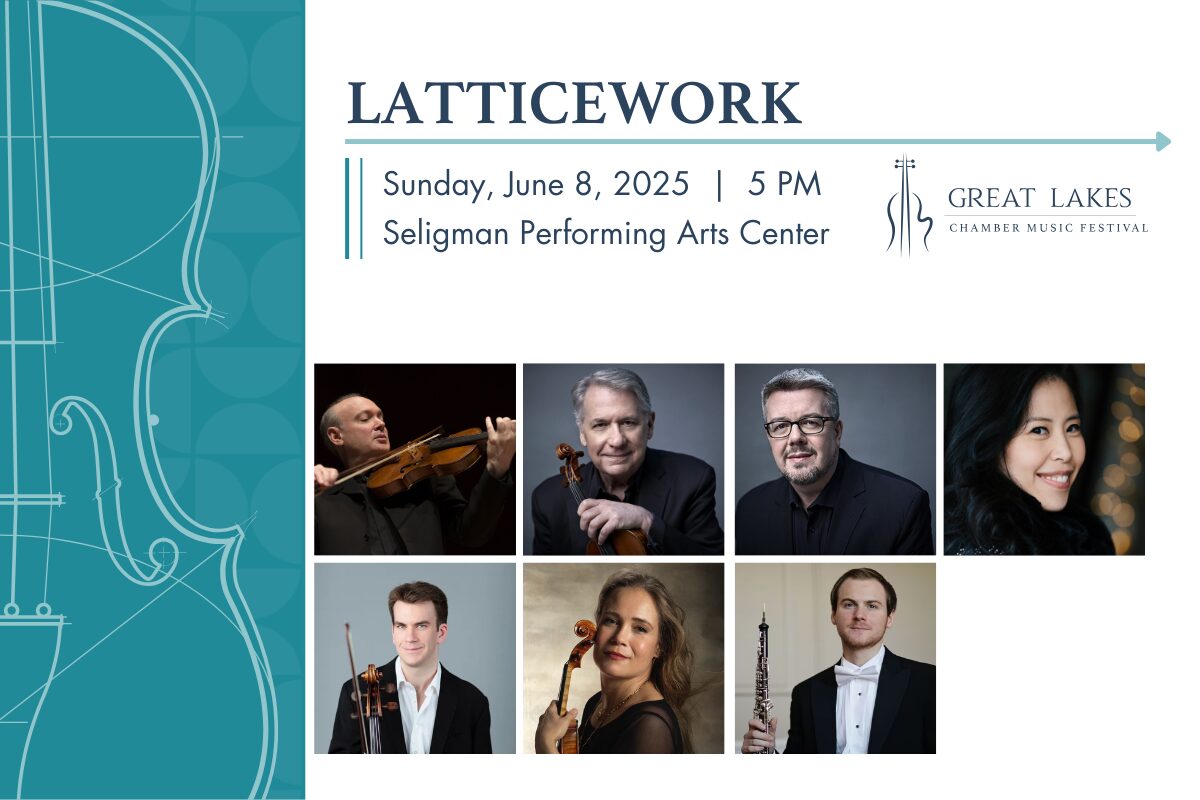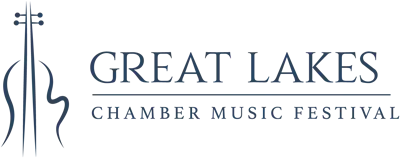Opening Night: Latticework

Sunday, June 8; 5:00 P.M.
Seligman Performing Arts Center
Ty Bouque
—
There is a rare little word for all this. Its coinage lies buried in a dense architectural treatise (the first of its kind, really), drafted at the behest of Caesar Augustus. In his De architectura, the Roman architect Vitruvius partitions the field of design into three constituent arenas: ichnography, orthography, and scenography. The first—and, for today, the only one that really matters—he takes from ichnos, Greek for print, and defines it as “the representation on a plane of the groundplan of the work, drawn by rule and compasses.” Ichnography, he terms modestly, is the art of the blueprint.
The word will remain an oddity until 1712, when Gottfried Leibniz picks it up while writing to the theologian Bartholomew Des Bosses: “the difference between the appearance of a body for us and for God is the difference between scenography and ichnography,” by which he means we see the world from a fixed singularity, in perspective, while God sees ichnography’s plurality: infinite, geometric, omnidirectional. Fast forward, and the French philosopher Michel Serres will read Leibniz reading Vitruvius in his Genesis, and take both men to the following conclusion:
Once more, what is the ichnography? It is the ensemble of possible profiles, the sum of horizons. Ichnography is what is possible, or knowable, or producible, it is the phenomenological well-spring, the pit. It is the complete chain of metamorphoses of the sea god Proteus, it is Proteus himself. It is thus inaccessible. We are tied down to a spot, our limitation, our definition is our point of view, we are chained to scenographies.
Serres’s point, mutatis mutandis, will be ours as well: that the privilege of the blueprint is to treat space as absolutely logical and generatively legible under the sign of geometry’s lines, angles, grids, points, figures. The privilege of ichnography, in other words, is an inherent formalism. And so: Blueprints in Sound, our 2025 theme, gives name to both a musical thematics as much as to an intellectual project. In the space of these program notes, we will read, time and again, for form, for the fragile contingencies and the shapes of impasses between structure and material that are always already in the process of change. Commitment to reading all this repertoire for our formalist theme means an impossible fidelity: we agree to be faithful to change itself, to what a famous formalist called form’s “particular way something is as it could have been and will be and is already becoming otherwise.”
—
The four works on our opening concert each problematize the blueprint in opposing and revealing ways. Sean Shepherd has long had a predilection for intricate exactitude. His music’s sonic fragility—hazy, hovering harmonies in endless permutation, glinting textures half-bathed in sun—is borne out on a structure watertight in its unfolding: he has a rigorous bent for proportion, for calculation. Tonight’s Latticework takes, as the title suggests, the cross-hatched pattern as an organizing principle: the invisible structure suggesting material possibilities is that particular interlaced shape. But it is also a curious foundation for labor. This is lattice work: there is exertion and effort in bringing such a detailed shape to audibility. We might, then, sense as though the music itself obeyed a strange obligation to exertion, as if the violin’s material were contractually drawn in these diagonals and hatchings, working to hang its body across so delicate a structure.
Where Shepherd takes an abstract geometric principle and unspools from it a narrative of sound’s material transformation, Benjamin Britten moves in the opposite direction: human narratives become abstract designs for musical transformation. (Note already the overlap with Serres: Protean metamorphoses are always a question of extreme form.) Six stories from the Metamorphoses serve as governing paradigms, but the idea was never that the music would somehow wordlessly “tell the story” of Phaeton, who rode upon the chariot of the sun, or Niobe, who transforms from her grief into a mountain. Instead, the change in state undergone by Ovid’s characters suggest only a form. The final phrase of Niobe, for instance—after nearly a whole page of hilly ascents and descents, an expanding field of arches scaling up towards the mountainous—reads senza espressivo—without expression. The transformation has turned melody from a subjective, pining utterance into pure abstracted harmony: the transformation, after all, was to reprieve her of human expression.
Both Haydn and Beethoven, meanwhile and in different ways, problematize fidelity to the blueprint. Haydn’s first cello concerto is strict as strict can be: three movements, each a meticulous sonata form. The use of sonata was, at the time, eminently modern: it is only just coming into fashion as a major formal discovery, a means for organizing transformation along logical lines. But where Haydn is obedient—his blueprint matches the building absolutely (Mozart will start the trend of breaking those rules)—Beethoven runs rampant, his sonatas a series of fake-outs and excessive ornament. Not to mention he’s twice removed from his ichnography: the Piano Quartet is itself a recasting of his previous Piano Quintet with winds, itself modeled on Mozart’s quintet with the same instrumentation and key. And while the revisionist sutures are expertly covered up, one can still hear in the material an older sensibility and a windy intention: the very first gesture betrays a music once meant to be played on a horn.
—
There is another ichnographic reading. Louis Marin, too, knew Vitruvius, though his conclusions were more somber: “The outline on the ground at the surface level is nothing but the trace that would be left by the building if it were to be destroyed by time, by the violence of meteors or men… [ichnography] is its ruin.” Eugenie Brinkema, that earlier famous formalist (who glossed all four of these ichnographers in her treatise on formalism) puts Marin back in terms more relevant to our project here: “Ichnography… names a giving of form that contains every undoing of form: what is there as what is already ravaged.”
These notes will always be the ruins and ravages of the music they address, whose vitality is only in the present of their instantiation. Read, certainly, but more importantly: listen.
From the Composer
© Sean Shepherd
Commissioned by the Great Lakes Chamber Music Festival, Chamber Music Northwest and
Seattle Chamber Music Society.
San Francisco Bay’s Angel Island acted as an immigration station for mostly Chinese immigrants in the beginning of the 20th century during the Chinese Exclusion Act. Many of those coming through would pose as “paper sons or daughters,” forging documents to make it seem like they were related to someone already a citizen of the US. The US was aware of this and as such implemented an intense interrogation process to find out if they were telling the truth. Those held at the station would spend weeks, months, and even years on the island before being released or sent back to their origins. Hundreds of poems are inscribed on the walls telling of their feelings of anxiety, fear, boredom, and despair in the terrible living conditions and grueling questioning by the immigration officers. Upon reading the poem inspiring the first movement, I had a very vivid image in my mind of a bird trying to escape from its cage and being yanked down violently each time. Just as the poem says, “After leaping into prison, I cannot come out,” the piece opens with the listener being thrust into the fray, evoking a sense of panic and anxiety in the quickly shifting textures. The movement comes to a climax with the cello playing against the other strings and the piano, creating a sense of conflict and violence before slowly fading out into nothing. The second movement evokes the quiet emotions felt by those on the island, as so eloquently expressed by the poet. There’s a sense of loneliness, despair, grief and homesickness as the poet perhaps regrets coming to a foreign land. Through this movement, in addition to portraying the imagery of the poem, I wanted to portray the emotions left unsaid- a sense of hopelessness that may arise from the question “will I ever be released?” The third movement immediately follows the second without pause, beginning with an extensive violin cadenza. I similarly wanted to portray a sense that the poet has lost all hope before finally being told that they’re going to be released into the US. What follows is a dramatic shift in the harmonic language. The violin solo continues, first echoed by the strings before being joined at the unison by the piano. This represents the poet “rejoicing” with their fellow villagers and the Asian American community as a whole coming together to thrive in spite of the violence, racism, trauma and other hardships they’ve faced. The piece ends with a short lullaby evoking the textures of the first movement, representing that this piece of history- one that is relatable to any immigrant population in the world- is one to live with and to learn from.
Translations by Genny Lim
- From Endless Sorrows, Tears and Blood Streak – Lee Gengbo of Toishan
After leaping into prison, I cannot come out.
From endless sorrows, tears and blood streak.
The jingwei bird carries gravel to fill its old grudge.
The migrating wild goose complains to the moon, mourning his harried life.
When Ziqing was in distant lands, who pitied and inquired after him?
When Ruan Ji reached the end of the road, he shed futile tears.
The scented grass and hidden orchids complain of withering and falling.
When may I be allowed to soar at my own pleasing? - Random Thoughts, Deep at Night – Yee of Toishan
In the quiet of night, I heard, faintly, the whistling of wind.
The forms and shadows saddened me; upon seeing the landscape, I composed a poem.
The floating clouds, the fog, darken the sky.
The moon shines faintly as the insects chirp.
Grief and bitterness entwined are heaven sent.
The sad person sits alone, leaning by a window.
- Cages of Jade – Poem 135
Detained in this wooden house for several tens of days,
It is all because of the Mexican exclusion law which implicates me.
It’s a pity heroes have no way of exercising their prowess.
I can only await the word so that I can snap Zu’s whip.
From now on, I am departing far from this building
All of my fellow villagers are rejoicing with me.
Don’t say that everything within is Western styled.
Even if it is built of jade, it has turned into a cage.
